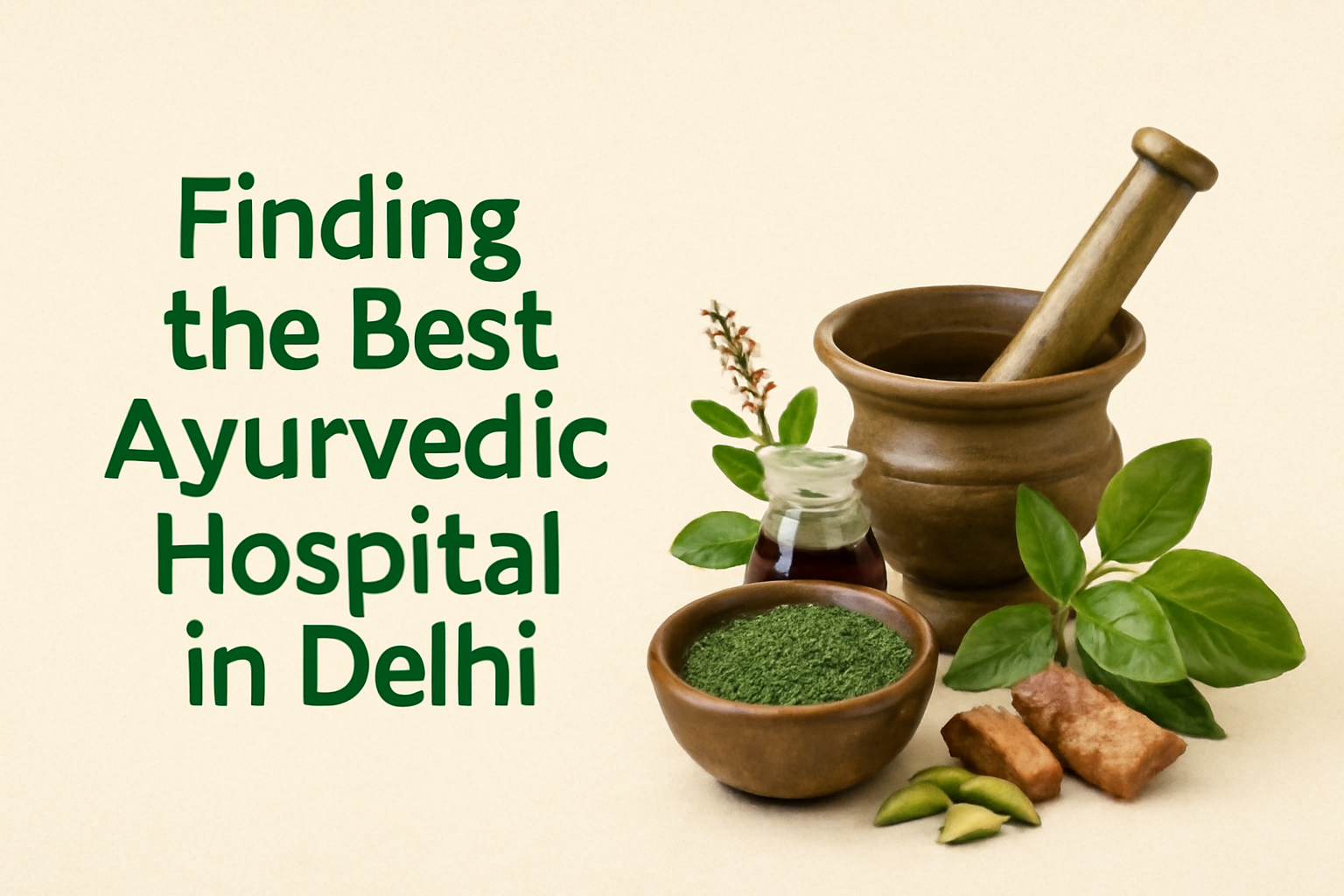Asthma, a chronic respiratory condition characterized by difficulty breathing, wheezing, coughing, and chest tightness, affects millions of people worldwide. As the condition continues to rise globally, the question arises: Which treatment is best for asthma, Ayurvedic or Allopathic? While Allopathic medicine offers conventional treatments, Ayurveda provides a holistic, root-cause approach to treating asthma. In this article, we’ll compare both approaches to asthma treatment and explore why Ayurveda, with its natural, holistic methods, can provide a permanent solution for many asthma sufferers.
At Pure Vedic Life, we are committed to offering the best Ayurvedic treatments, consultations, and medicines for asthma management. Ayurveda, with its age-old wisdom, focuses on personalized care to restore balance in the body, treating not just the symptoms but the root cause of asthma.
Understanding Asthma in Ayurveda
Asthma, referred to as Tamaka Shwasa in Ayurvedic terms, is primarily caused by an imbalance in the Kapha and Vata doshas. These doshas are the energies that govern physiological functions in the body:
- Kapha dosha: Responsible for structure and lubrication. When imbalanced, it leads to excess mucus, which can block the airways.
- Vata dosha: Controls movement and functions of the nervous system. An imbalance in Vata results in irregular breathing patterns and constricted airways.
In Ayurveda, asthma is believed to be caused by a blockage in the respiratory channels (Srotorodha), and toxins (Ama) accumulating in the body. Therefore, treatment focuses on eliminating Ama, clearing blocked channels, and balancing the doshas, particularly Vata and Kapha.
Ayurvedic Approach to Treating Asthma
Ayurveda offers a holistic treatment plan that combines dietary changes, herbal remedies, Panchakarma detoxification therapies, breathing exercises (Pranayama), and lifestyle modifications. This multi-pronged approach focuses on treating the root cause of asthma and promoting overall respiratory health, offering long-term relief.
Key Ayurvedic Treatments for Asthma
- Herbal Remedies: Ayurvedic herbs play a crucial role in treating asthma. Several herbs are renowned for their ability to reduce inflammation, clear mucus from the airways, and improve lung function:
- Vasa (Adhatoda vasica): This herb is known for its bronchodilator properties, helping to relieve inflammation and clear excess mucus in the airways.
- Pushkarmool (Inula racemosa): Helps in clearing mucus and acts as a natural expectorant, making it easier to breathe.
- Yastimadhu (Licorice): Soothes the respiratory tract, reduces inflammation, and strengthens the immune system.
- Tulsi (Holy Basil): Possesses anti-inflammatory, antioxidant, and antimicrobial properties that reduce inflammation in the lungs and improve overall lung function.
- Panchakarma Therapy: Panchakarma, a detoxification and rejuvenation therapy in Ayurveda, is one of the most effective treatments for asthma. Panchakarma aims to remove toxins (Ama) from the body, clear blocked respiratory channels, and balance the doshas. Some key Panchakarma treatments for asthma include:
- Vamana (Therapeutic Vomiting): This process helps eliminate excess Kapha, clears mucus from the lungs, and reduces congestion.
- Virechana (Purgation): Eliminates toxins and balances Pitta dosha, providing relief from inflammation and respiratory distress.
- Basti (Enema Therapy): Medicated enemas help clear excess Vata dosha, reduce stress, and restore digestive health, which plays a role in managing asthma.
- Dietary Modifications: Ayurveda emphasizes a balanced and wholesome diet to treat and prevent asthma. Diet is considered a crucial factor in balancing the doshas and managing asthma effectively. Recommended dietary practices include:
- Warm, light, and easily digestible foods: These help balance Kapha and prevent the accumulation of mucus in the body.
- Anti-inflammatory spices: Turmeric, ginger, and black pepper are commonly used in Ayurvedic diets to reduce inflammation and support lung health.
- Avoid dairy, fried, and cold foods: These foods can aggravate Kapha dosha, leading to excess mucus production in the airways.
- Pranayama (Breathing Exercises): Pranayama refers to controlled breathing exercises that play a pivotal role in asthma management. These exercises improve lung capacity, enhance oxygen intake, and reduce stress, which is a common trigger for asthma. Some useful pranayama techniques include:
- Anulom Vilom (Alternate Nostril Breathing): Balances Vata dosha, calms the nervous system, and strengthens lung function by regulating the breath.
- Bhastrika (Bellows Breath): Improves lung function, enhances blood circulation, and opens up the airways.
- Kapalbhati (Skull Shining Breath): Improves respiratory strength, detoxifies the lungs, and boosts overall health.
- Lifestyle Modifications: Ayurveda stresses the importance of maintaining a balanced lifestyle to manage asthma effectively. This includes:
- Regular exercise: Engaging in activities like walking, yoga, or swimming helps increase lung capacity and improve breathing patterns.
- Stress management: Techniques such as meditation, yoga, and mindfulness can prevent asthma attacks triggered by emotional stress.
- Adequate sleep: Ensuring sufficient rest is critical for immune function and reducing inflammation.
Allopathic Treatment for Asthma
Allopathic medicine, or conventional Western medicine, primarily focuses on treating asthma symptoms and preventing acute attacks. Allopathic treatments involve the use of medications, including:
- Bronchodilators: Medications like albuterol are commonly prescribed to open the airways during an asthma attack, providing immediate relief.
- Inhaled Corticosteroids: These are long-term treatments that reduce inflammation in the airways and prevent frequent asthma attacks.
- Leukotriene Modifiers: Medications that reduce inflammation and relax the muscles around the airways.
- Immunotherapy: Allergy shots designed to desensitize the body to specific allergens that trigger asthma attacks.
Allopathic treatments offer immediate relief during asthma attacks and are often necessary for acute episodes. However, long-term use of corticosteroids and bronchodilators may lead to side effects such as increased heart rate, nervousness, and bone density loss.
Which Treatment is Best for Asthma, Ayurvedic or Allopathic?
The question of Which treatment is best for asthma, Ayurvedic or Allopathic? depends on individual preferences, the severity of the condition, and the desired approach to treatment.
- Allopathic treatment is often preferred for immediate relief during acute asthma attacks. Medications like bronchodilators and inhaled corticosteroids are effective at providing quick symptom relief, but they are often not a permanent solution.
- Ayurvedic treatment, on the other hand, offers a holistic, long-term solution by addressing the root cause of asthma. Through the use of herbal remedies, Panchakarma detox therapies, dietary modifications, and breathing exercises, Ayurveda can help restore balance in the body and improve lung health over time.
For many individuals, a combination of both treatments can be the most effective approach. Using Ayurvedic remedies and lifestyle changes for long-term management, combined with allopathic medications for acute episodes, can provide a balanced and comprehensive asthma management plan.
Conclusion
The treatment for asthma, whether Ayurvedic or Allopathic, should be based on individual needs and health conditions. While allopathic medicine offers quick relief, Ayurveda provides a holistic and permanent solution by addressing the root cause and promoting long-term health. At Pure Vedic Life, we specialize in providing Ayurvedic treatments, consultations, and medicines to help you manage asthma naturally and effectively. Through a personalized approach that includes herbal remedies, Panchakarma therapies, dietary advice, and breathing exercises, we aim to bring lasting relief to asthma sufferers.
Frequently Asked Questions (FAQs) on Asthma and Ayurvedic Treatment
1. What is asthma and how does Ayurveda view it?
Asthma is a chronic respiratory condition where the airways become inflamed, leading to difficulty breathing, wheezing, and coughing. In Ayurveda, asthma is known asTamaka Shwasa, which is primarily caused by an imbalance in the Kapha and Vata doshas. These doshas control the flow of air in the body and the mucus production, which, when imbalanced, leads to blockages in the airways and inflammation.
Charaka Samhita Reference:
Sanskrit:
“श्वास रोगे कफवात पित्तसङ्ग्रहेण शमनं च उपचारं क्रियेत्।”
English Translation:
“In respiratory diseases, treatment should aim to balance the doshas, especially Kapha, Vata, and Pitta.”
Hindi Translation:
“श्वास रोगों में उपचार का उद्देश्य कफ, वात और पित्त के संतुलन को स्थापित करना चाहिए।”
2. How can Ayurveda treat asthma permanently?
Ayurveda offers a permanent solution for asthma by treating the root causes and promoting overall health. Instead of merely managing symptoms, Ayurveda seeks to restore dosha balance, remove toxins from the body (Ama), and improve lung function. Treatment includes herbal remedies, dietary changes, Panchakarma detox, and lifestyle adjustments.
Charaka Samhita Reference:
Sanskrit:
“शरीरमात्मजं शुद्धं कफवातपित्तविवर्धनं, श्वास रोगं शमयेत्।”
English Translation:
“Purification of the body, which is the abode of the soul, by balancing Kapha, Vata, and Pitta, will reduce the symptoms of respiratory diseases.”
Hindi Translation:
“शरीर की शुद्धि, जो आत्मा का निवास है, कफ, वात और पित्त के संतुलन से श्वास रोग के लक्षणों को कम कर देती है।”
3. What are the main Ayurvedic herbs used to treat asthma?
Several herbs are highly effective in treating asthma by reducing inflammation, clearing mucus, and improving overall respiratory function. Key herbs include:
Vasa (Adhatoda vasica): Known for its bronchodilator properties, it helps relieve inflammation and clear mucus.
Pushkarmool (Inula racemosa): Acts as an expectorant, making it easier to breathe.
Tulsi (Holy Basil): Has anti-inflammatory and antioxidant properties that improve lung function.
Yastimadhu (Licorice): Soothes the respiratory tract, reducing inflammation.
Charaka Samhita Reference:
Sanskrit:
“वासा तूलसी यस्तिमधुः श्वास रुग्णं शमयन्ति।”
English Translation:
“Vasa, Tulsi, and Yastimadhu are highly beneficial for relieving respiratory diseases.”
Hindi Translation:
“वासा, तुलसी और यस्तिमधु श्वास रोगों को शांत करने में अत्यंत लाभकारी हैं।”
4. How does Panchakarma help in the treatment of asthma?
Panchakarma is an Ayurvedic detoxification therapy that cleanses the body of toxins (Ama) and restores dosha balance. It is highly effective for asthma treatment as it helps to clear mucus from the lungs and reduce inflammation. Specific Panchakarma treatments like Vamana (therapeutic vomiting) and Virechana (purgation) can relieve the excess Kapha (mucus) and improve lung function.
Charaka Samhita Reference:
Sanskrit:
“वमनं कफोन्मूलनं श्वास रोगे विशेषतया।”
English Translation:
“Vamana is the best method to eliminate excess Kapha and is particularly useful in the treatment of respiratory diseases.”
Hindi Translation:
“वमन कफ को नष्ट करने का सर्वोत्तम उपाय है और विशेष रूप से श्वास रोगों के उपचार में उपयोगी है।”
5. What role does diet play in Ayurvedic asthma treatment?
In Ayurveda, diet is considered essential in managing asthma. Foods that aggravate Kapha dosha (such as dairy products, fried foods, and processed foods) should be avoided, while warm, light, and easily digestible foods should be preferred. Anti-inflammatory spices like turmeric, ginger, and black pepper are recommended for their role in reducing inflammation and improving lung health.
Charaka Samhita Reference:
Sanskrit:
“तप्तं शाकं खाद्यं श्वास रोगे कफवात निवारणम्।”
English Translation:
“Warm vegetables are beneficial for individuals with respiratory diseases as they help balance Kapha and Vata.”
Hindi Translation:
“तप्त शाकाहारी भोजन श्वास रोगियों के लिए लाभकारी है क्योंकि यह कफ और वात को संतुलित करता है।”
6. How does Pranayama (breathing exercises) help in asthma management?
Pranayama (controlled breathing exercises) is a key part of Ayurvedic treatment for asthma. Techniques like Anulom Vilom (alternate nostril breathing) and Bhastrika (bellows breath) are highly effective in strengthening the lungs, improving oxygen intake, and reducing stress—one of the most common triggers of asthma. By increasing lung capacity and oxygen flow, pranayama can help reduce the frequency of asthma attacks and improve overall lung function.
Charaka Samhita Reference:
Sanskrit:
“प्राणायामो जीवनशक्ति को बढ़ाता है और श्वास की गुणवत्ता में सुधार करता है।”
English Translation:
“Pranayama enhances vital energy and improves the quality of breath.”
Hindi Translation:
“प्राणायाम जीवन शक्ति को बढ़ाता है और श्वास की गुणवत्ता में सुधार करता है।”
7. Can Ayurveda provide a permanent solution for asthma?
Yes, Ayurveda offers a permanent solution for asthma by addressing the root cause of the disease—imbalance in the doshas (Vata and Kapha). Ayurvedic treatments focus on restoring balance in the body, eliminating toxins (Ama), and improving lung function. While Ayurvedic treatments may take time to show results, they provide long-term relief by promoting overall respiratory health and preventing future asthma attacks.
Charaka Samhita Reference:
Sanskrit:
“आयुर्वेदं श्वास रोगे संतुलनं आस्थापनं जीवनस्य।”
English Translation:
“Ayurveda restores balance in the body and provides long-term solutions to respiratory diseases.”
Hindi Translation:
“आयुर्वेद शरीर में संतुलन बहाल करता है और श्वास रोगों के लिए दीर्घकालिक समाधान प्रदान करता है।”





















